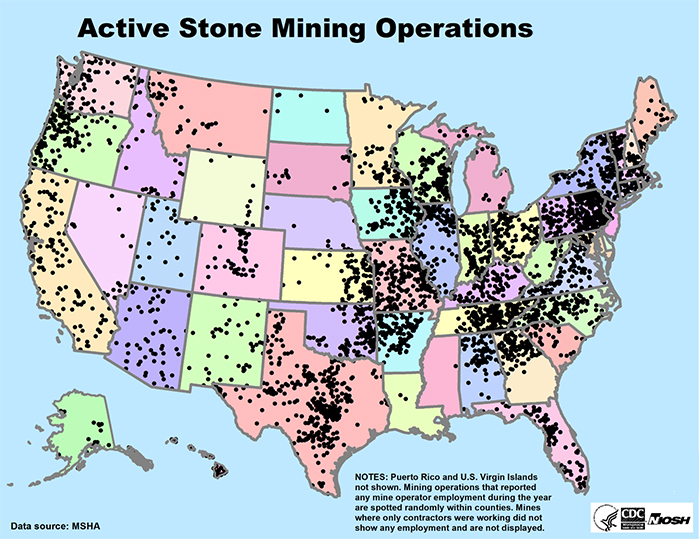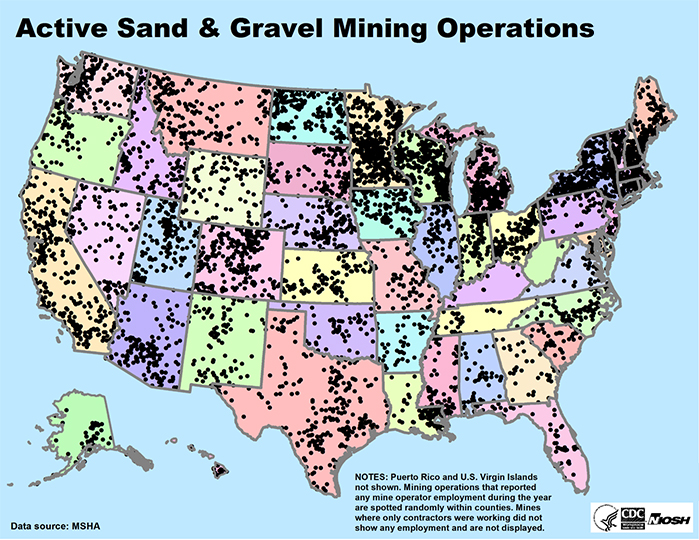Lesson 1.3: Where Are All of These Mines?
The most recently available data shows that we have over 13,000 mines in the U.S. By law, all mines must be registered with the U.S. Mine Safety and Health Administration (MSHA), and by analyzing their database, we can learn much about mining in this country. For example, we can determine the number of mines by commodity, size, and location. Back to the question: where are these mines? They’re everywhere, and you probably didn’t realize it! Take a look at Figure 1.3.1 below, which shows the location of these mines by major sector, i.e., metal, nonmetal, and coal.
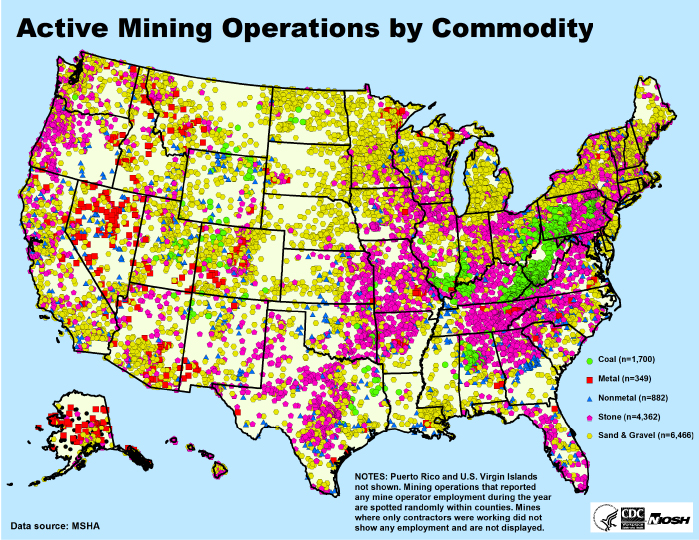
Before examining this map more closely, we should address the related question: why are they where they are? What do you think?
First and foremost, the availability of the mineral resource will dictate where we mine. Although minerals of nearly every variety are found through the crust of the Earth, it is relatively rare to find a concentration of a particular mineral to justify a commercial mining activity. Of course, the relative rarity of an economic concentration depends on the commodity. If we want to mine gold, for example, there are a limited number of locations where we will find economic concentrations. On the other hand, if we want to mine stone for construction purposes, we can find it almost anywhere.
Let’s say we know of an economic deposit. Are there are other factors that would determine whether or not we would open a mine at that location? Yes, absolutely there are, and we will look at that in more detail later in this course. For the purposes of this discussion, I’ll bring one additional consideration to your attention with the following example. Economic deposits of metals exist in the densely populated areas of the east coast. Decades ago, there were commercial metal mining activities, e.g., New Jersey Zinc Company. Today, there are none. Why? The land is so valuable that it would be prohibitively expensive to acquire it, and urban zoning ordinances severely restrict mining operations. Now, with this background, let’s take a closer look at the locations of these mines.
The metal and nonmetal mines encompass the nonfuel minerals. For reasons that may become clear as we go through this course, a variety of terms, which are similar if not synonymous, are used by geologists, mining engineers, and government regulators. Anyway, the location of the metal/nonmetal mines is shown in Figure 1.3.2.
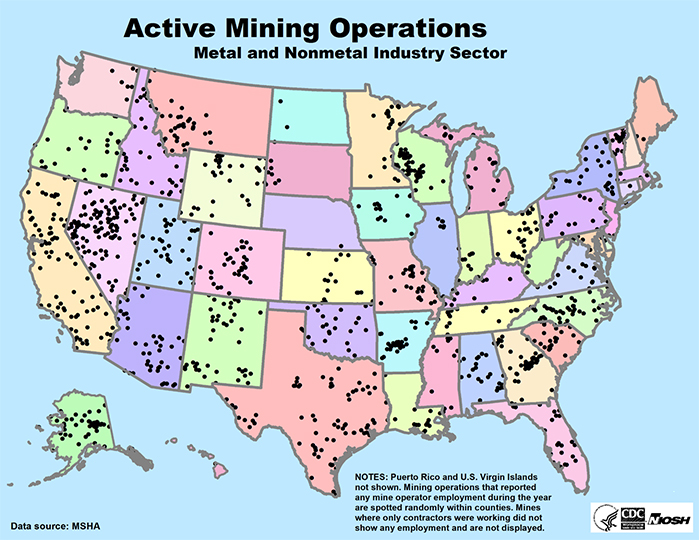
We can go down one additional level, and separate the metal from the nonmetal mines, as shown in Figures 1.3.3 and 1.3.4.
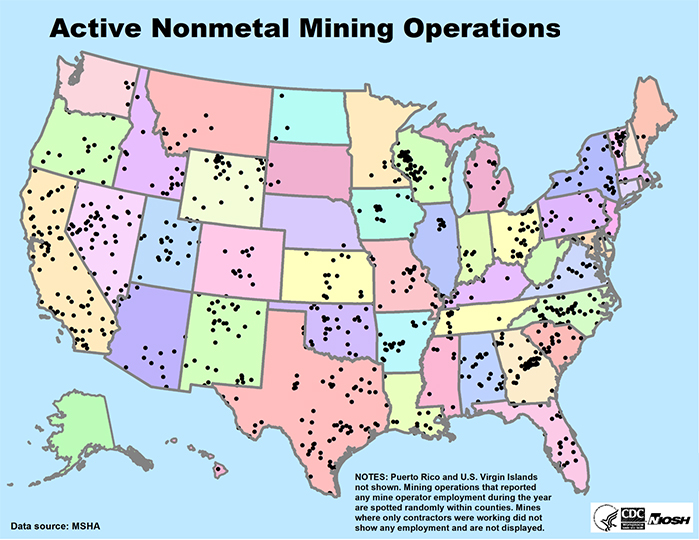
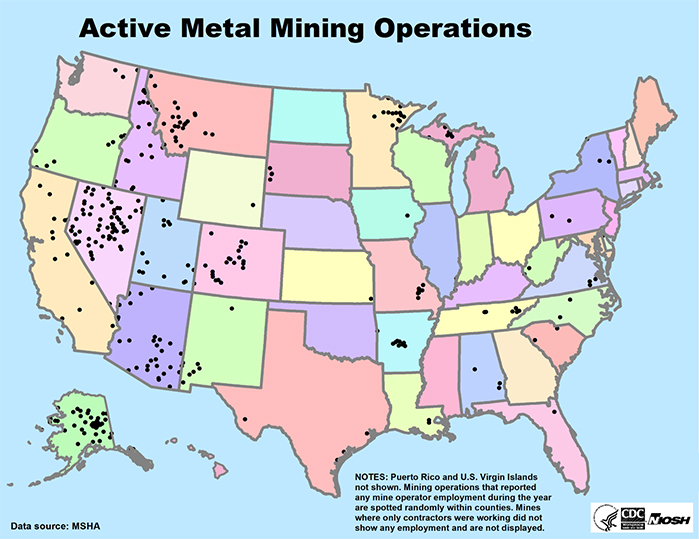
Stone, sand, and gravel mines are generally grouped together and are separated from metal/nonmetal mines even though these commodities qualify as nonmetal. For clarity, the stone mines are shown separately from the sand and gravel mines in Figures 1.3.5 and 1.3.6. As you can see, the number of mines is remarkably large. They are everywhere! Why are they everywhere? Simply, several different minerals can be used as aggregates, i.e., stone, sand, and gravel; and as such, they are readily found throughout the U.S. Just because we have a mineable deposit, do we have a need for a mine? No! What else do we need? There must be a demand for whatever we are going to mine, i.e., we need a market for the mined product. Aggregates are used for what purpose? The primary use is in construction – construction of houses, buildings, roads, and so on. Thus there is a strong demand for aggregates wherever people live and work, and this is evident from the maps.
